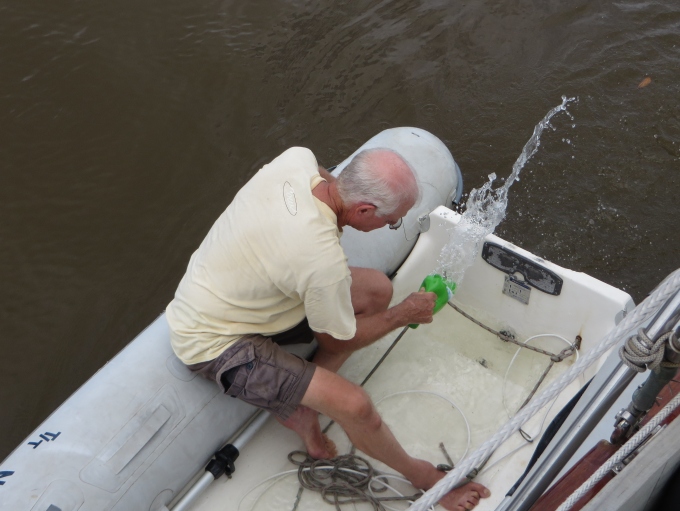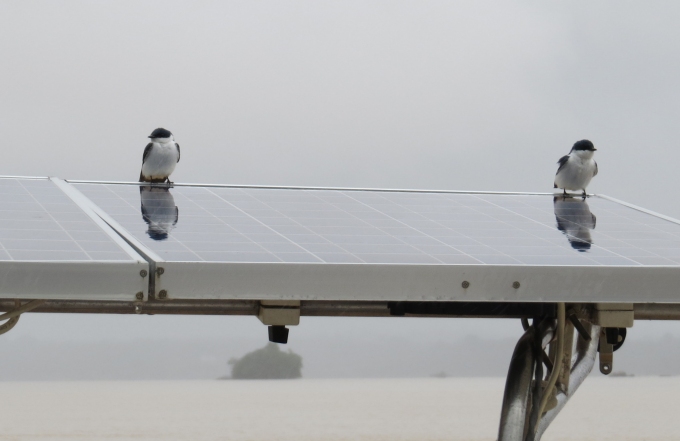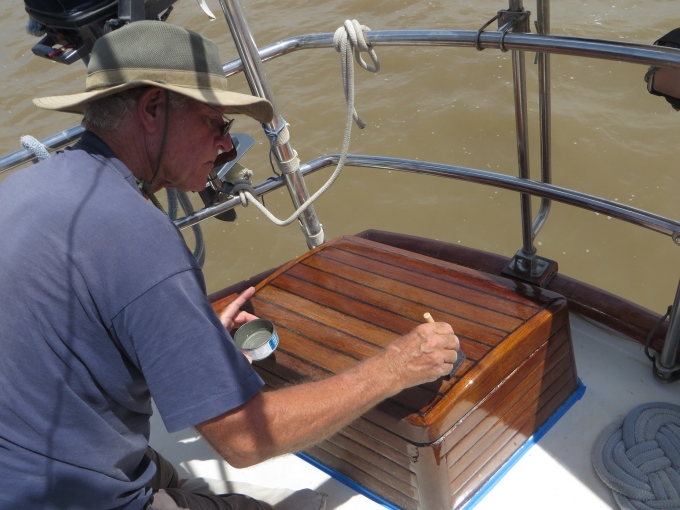Writing for Fun and Profit - Pt. 1
/ We must have at least four books in the works at the moment … all of them in various stages of “incomplete”. There's a cookbook which needs a rewrite and an anthology of sailing stories from down under. David's electrical handbook for sailors is coming together and we've been working on a novel idea for ages. We thought the long Atlantic passage would be great for concentrating on our books, but it's our magazine articles, not books, that help feed the cruising kitty. Relying on our sailing experiences, we're able to share our life aboard Nine of Cups and get paid for it. What a deal!
We must have at least four books in the works at the moment … all of them in various stages of “incomplete”. There's a cookbook which needs a rewrite and an anthology of sailing stories from down under. David's electrical handbook for sailors is coming together and we've been working on a novel idea for ages. We thought the long Atlantic passage would be great for concentrating on our books, but it's our magazine articles, not books, that help feed the cruising kitty. Relying on our sailing experiences, we're able to share our life aboard Nine of Cups and get paid for it. What a deal!
Want to take a stab at getting published in a magazine? Try these ideas.
- Determine an area of expertise or interest. You don't have to be a sailor. Figure out what you'd like to write about. Do you have a hobby? Are you a parent? Do you like to travel? Do you have pets? Are you a farmer, a hairdresser, a welder, a 50+ retiree? Obviously, the more you know or care about your topic, the more it will show in your writing.
- Research what journals or magazines cater to this interest. There are magazines out there for every interest imaginable. Don't forget to research regional magazines for your area. They're smaller and may be more interested in your articles than national journals. Think outside of the box. We tend to write for sailing magazines because we sail and live on a boat, but I've submitted articles to cat magazines because we used to have a cat aboard. I've submitted articles to travel magazines. I've even submitted funny anecdotes to Reader's Digest.
- Obtain the Writer's Guidelines for those magazines of interest. This is key. Some magazines are very specific as to the length of the piece, the format in which it should be submitted, whether photos are required, their terms and amounts of their payment. The links below provide lists of magazines and their guidelines. These lists are not exhaustive by any means, but they'll give you an idea of what's out there.
http://www.freelancewriting.com/guidelines/pages/index.php
http://www.internet-resources.com/writers/markets/online-guidelinesMO.htm#MMM
- Get a copy of the magazine(s) in which you're interested. Read it thoroughly. Determine what types of articles they publish and what types they don't. Good Old Boat, for instance, does not accept destination articles, but loves “how-to” pieces. Caribbean Compass only accepts articles concerning the Caribbean. Get a feel for the mood of the pieces. Are they serious? Whimsical? First person anecdotes? Determine what “departments” they have that might prove suitable for the article you want to write.
- Figure out your angle. Magazine articles usually do one or more of these things: inform, persuade, instruct, or entertain. I tend to write informational/entertainment pieces on the places we visit. David writes how-to and technical pieces (instructional) on various topics relating to the boat. Which category fits your article? Which category fits the magazine?
Stay tuned for Part 2 tomorrow …









